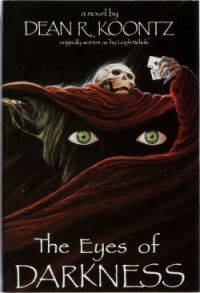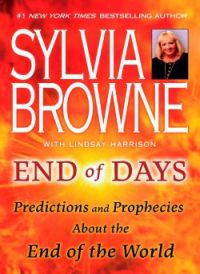 The future is here, the future is now. It was, in-part, imagined some years ago in science fiction novels, and prophesized by psychics, gurus and thinkers of sorts. If our recent experience is any indication, our future may lie in the conceptual, fantastical and slightly implausible worlds created by figments of our imaginations. With so many possible outcomes, it’s easy to wonder if it will be possible for us to realize the truth and value in these imaginings, especially when the future they predict has already become reality.
The future is here, the future is now. It was, in-part, imagined some years ago in science fiction novels, and prophesized by psychics, gurus and thinkers of sorts. If our recent experience is any indication, our future may lie in the conceptual, fantastical and slightly implausible worlds created by figments of our imaginations. With so many possible outcomes, it’s easy to wonder if it will be possible for us to realize the truth and value in these imaginings, especially when the future they predict has already become reality.
Fiction writers hoping to deliver radical departures from our everyday interactions with the world, end up morphing our future world. The following enduring snippets hit close to home with what they thought would happen, and how things actually transpired.
 “It was around then that a Chinese scientist named Li Chen defected to the United States, carrying a diskette record of China’s most important and dangerous new biological weapon in a decade. They call the stuff ‘Wuhan-400’ because it was developed at their RDNA labs outside of the city of Wuhan, and it was the four-hundredth viable strain of man-made microorganisms created at that research center.”
“It was around then that a Chinese scientist named Li Chen defected to the United States, carrying a diskette record of China’s most important and dangerous new biological weapon in a decade. They call the stuff ‘Wuhan-400’ because it was developed at their RDNA labs outside of the city of Wuhan, and it was the four-hundredth viable strain of man-made microorganisms created at that research center.”
[The Eyes of Darkness, Dean Koontz (1981) pp.353.This was originally published in 1981 with details of a man-made virus called Gorki-400 from the Russian city of Gorki and changed to Wuhan when the book was released in hardback under Koontz’s own name in 1989 – at the end of the Cold War. It describes a killer virus that echoes the current Covid-19 virus outbreak that could have originated from Wuhan, Institute of Virology, which houses China’s only level- four bio safety laboratory.]
 “We had a large dry-erase board in the kitchen wall. On one side, roommates put notes about groceries needed and leftovers available and things like ‘Good luck on the interview, Jaspreet!’ On the other side, we kept a running list titled ‘Don’t Forget Normal.’……Leaving the highway for the country road, watching the county road roll into Jory’s Main Street, Rosemary was struck by the emptiness. She’d never noticed before, or else she’d assumed the mix of dead business and thriving ones was normal”.
“We had a large dry-erase board in the kitchen wall. On one side, roommates put notes about groceries needed and leftovers available and things like ‘Good luck on the interview, Jaspreet!’ On the other side, we kept a running list titled ‘Don’t Forget Normal.’……Leaving the highway for the country road, watching the county road roll into Jory’s Main Street, Rosemary was struck by the emptiness. She’d never noticed before, or else she’d assumed the mix of dead business and thriving ones was normal”.
[A Song for a New Day, Sarah Pinsker (2019). Chapter 12, p.112; Chapter 13, p. 117. A speculative science fiction novel about Rosemary Laws, who spends her days helping customers order online in a near-future setting wrought by social distancing, the result of terrorist activity and a flu-like pandemic that swept the world.]
 “Minutes before, a car painted with a skull and crossbones had been illegally parked in front of the building, on 42nd Street. The driver – masked, of course, like everyone on the sidewalks – jumped out and ran toward a nearby drugstore. A patrolman across the street noticed, and thought little of it; Trainites were forever drawing skull-and-crossbones signs on cars, and not everyone could spare the time or money to clean them off straight away. Besides, if the guy had run into a drugstore he was likely in need of urgent medicine. So he just made a mental note to tell him off when he came back. Only he didn’t come back. He continued out the other door of the drugstore and doubled into the bowels of Grand Central Station, and was well out of reach when the fuse in the back of the car reached what they later estimated to be fifty sticks of dynamite.”
“Minutes before, a car painted with a skull and crossbones had been illegally parked in front of the building, on 42nd Street. The driver – masked, of course, like everyone on the sidewalks – jumped out and ran toward a nearby drugstore. A patrolman across the street noticed, and thought little of it; Trainites were forever drawing skull-and-crossbones signs on cars, and not everyone could spare the time or money to clean them off straight away. Besides, if the guy had run into a drugstore he was likely in need of urgent medicine. So he just made a mental note to tell him off when he came back. Only he didn’t come back. He continued out the other door of the drugstore and doubled into the bowels of Grand Central Station, and was well out of reach when the fuse in the back of the car reached what they later estimated to be fifty sticks of dynamite.”
[The Sheep Look Up (1972), by John Brunner. This story deals with the killing of the environment with chemicals, drugs, indifference, stupidity and greed.]
Science fiction may very well possess the unique ability to shape our future. There is an overlap between imagination and perception that ultimately lead to predictive processing. Imagination is not one of the statistical techniques used to analyze current and historical facts to make predictions about future or otherwise unknown events, but it is used in predictive processing models in neuroscience. Historical facts after the tragic Ebola outbreak in West Africa coupled to statistical extrapolation is what Bill Gates prophetically used in 2015, during his TED talk at the conference in Vancouver when he said:
“What I’ve learned is very sobering. As awful as this epidemic has been, the next one could be much worse. The world is simply not prepared to deal with a disease—an especially virulent flu, for example—that infects large numbers of people very quickly. Of all the things that could kill 10 million people or more, by far the most likely is an epidemic.”
 On the other side of the spectrum a psychic using nothing more than a series of cognitive biases, which dependant of the frequency of misses compared to hits can ultimately discredit any credibility. Case in point, the very popular, self-proclaimed psychic, Sylvia Browne, who faced criticism for making pronouncements that were later found to be false, came pretty close to predicting the COVID-19 pandemic:
On the other side of the spectrum a psychic using nothing more than a series of cognitive biases, which dependant of the frequency of misses compared to hits can ultimately discredit any credibility. Case in point, the very popular, self-proclaimed psychic, Sylvia Browne, who faced criticism for making pronouncements that were later found to be false, came pretty close to predicting the COVID-19 pandemic:
“In around 2020 a severe pneumonia-like illness will spread throughout the globe, attacking the lungs and the bronchial tubes and resisting all known treatments. Almost more baffling than the illness itself will be the fact that it will suddenly vanish as quickly as it arrived, attack again ten years late, and then disappear completely. [End of Days, Sylvia Browne (2008). Chapter 7, p. 210 ]
Many organizations already recognize that a glimpse into the future can mean staying ahead of the competition, be relevant in the future, instead of waiting for it to arrive. How do they hope to achieve that? They are investing heavily in talent with experience in data analytics, predictive modeling and machine learning. The most recent resource to be added to their arsenal: authors of speculative fiction.

{ 0 comments… add one now }